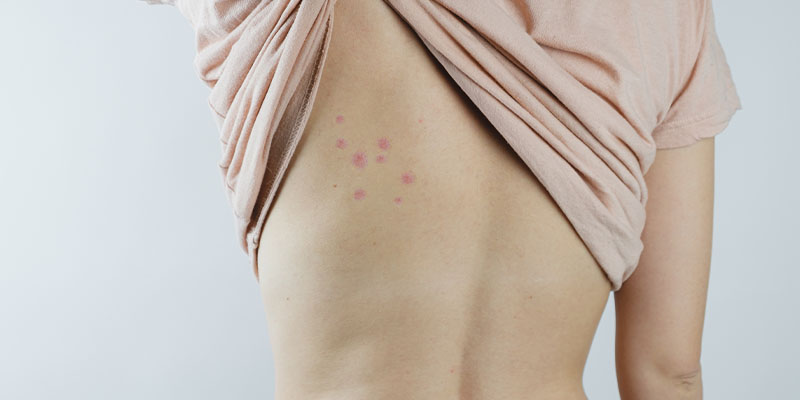Bedbugs are very unpleasant, filthy, and perhaps worst of all, quite difficult to eradicate. Bedbugs make their way into residential homes through several means, usually after a hotel stay. But, unfortunately, that isn’t their only mode of transportation. Plus, once they are present in a home, it can take a whole lot of time and effort to get rid of them. The good news is there are solutions. Read on to learn more about bedbugs and how to be rid of them.
What are Bedbugs?
Bedbugs are small, reddish-brown insects that feed on the blood of animals and humans. They are flat and oval-shaped and can range in size from 1 to 7 millimeters, roughly the size of an apple seed. Bedbugs are wingless and cannot fly, but they can move quickly across floors, walls, and ceilings.
Bedbugs typically feed at night, and their bites can cause itchy, red welts on the skin. Bedbugs can survive for several months without feeding, which makes them particularly difficult to eradicate once they have infested a home or building.
Bedbugs are often found in areas where people sleep or spend long periods, such as bedrooms, hotels, and hospitals. They can hitchhike on clothing, luggage, and other personal belongings, which is why they are frequently found in places with a lot of foot traffic.
Signs You May have Bedbugs in Your Home
Bedbug infestations can be difficult to control and often require professional pest control services to get rid of them. Early detection and treatment are essential to prevent the infestation from spreading and causing further problems. Here are some signs that you may have bedbugs in your home:
- Bites: The most obvious sign is visible, itchy bites. Bedbugs are nocturnal and usually feed on people while they sleep, leaving behind small, itchy red welts on the skin. These bites are often arranged in a straight line or cluster and are typically found on exposed skin, such as the face, neck, arms, and legs.
- Bloodstains: Bedbugs can be squished during feeding, leaving behind small blood stains on sheets, pillowcases, or mattress covers. So, if you see tiny blood spots, that’s another indication.
- Dark Spots: Bedbugs leave behind their fecal matter, which can appear as small dark spots on sheets, mattresses, or walls. These spots may also have a musty odor.
- Eggshells and Shed Skins: As bedbugs grow, they shed their skin and leave behind eggshells. These can be found in areas where bedbugs are present, such as on mattresses, bed frames, or in cracks and crevices.
- Live Bugs: Bedbugs are small and can be difficult to spot, although they can be seen with the naked eye. Look for live bugs in areas where bedbugs are likely to hide, such as on mattresses, box springs, bed frames, and furniture.
If you suspect that you have bedbugs in your home, it’s important to act fast. Bedbug infestations can spread quickly and can be difficult to eradicate without professional pest control services. Contact a licensed pest control company to perform a thorough inspection and provide a treatment plan to eliminate the infestation.
How Homeowners can Get Rid of Bedbugs
Getting rid of bedbugs can be a challenging and time-consuming process, but here are some steps that homeowners can take to help eliminate bedbugs from their properties:
- Identify the Source: Inspect the areas where bedbugs are suspected to be present, such as bedding, furniture, and cracks and crevices. Look for signs of bedbugs, such as dark spots, bloodstains, and live bugs.
- Vacuuming: Vacuuming can help remove bedbugs and their eggs from surfaces. Use a vacuum with a HEPA filter to ensure that the bedbugs do not escape. You’ll have to be thorough, to get all of them. Otherwise, if some are left behind, you’ll continue to have a problem.
- Wash and Dry: Wash and dry all clothing, bedding, and other washable items in hot water and dry them on the highest heat setting. This will help kill bedbugs and their eggs.
- Encase Mattresses and Box Springs: Encase mattresses and box springs with special bedbug-proof covers to prevent bedbugs from entering or escaping.
- Use Insecticides: Insecticides can be effective in killing bedbugs, but they should be used with caution. Always follow the instructions on the label and use only insecticides that are labeled for use on bedbugs.
- Call a Pest Control Professional: Bedbug infestations can be difficult to eliminate, and it is often best to seek the help of a licensed pest control professional. A professional can perform a thorough inspection, develop a treatment plan, and help eliminate the infestation.
It’s important to remember that eliminating bedbugs can take time and multiple treatments may be necessary. It’s also important to take preventative measures to avoid future infestations, such as regularly vacuuming, inspecting second-hand furniture before bringing it into your home, and taking precautions while traveling.
